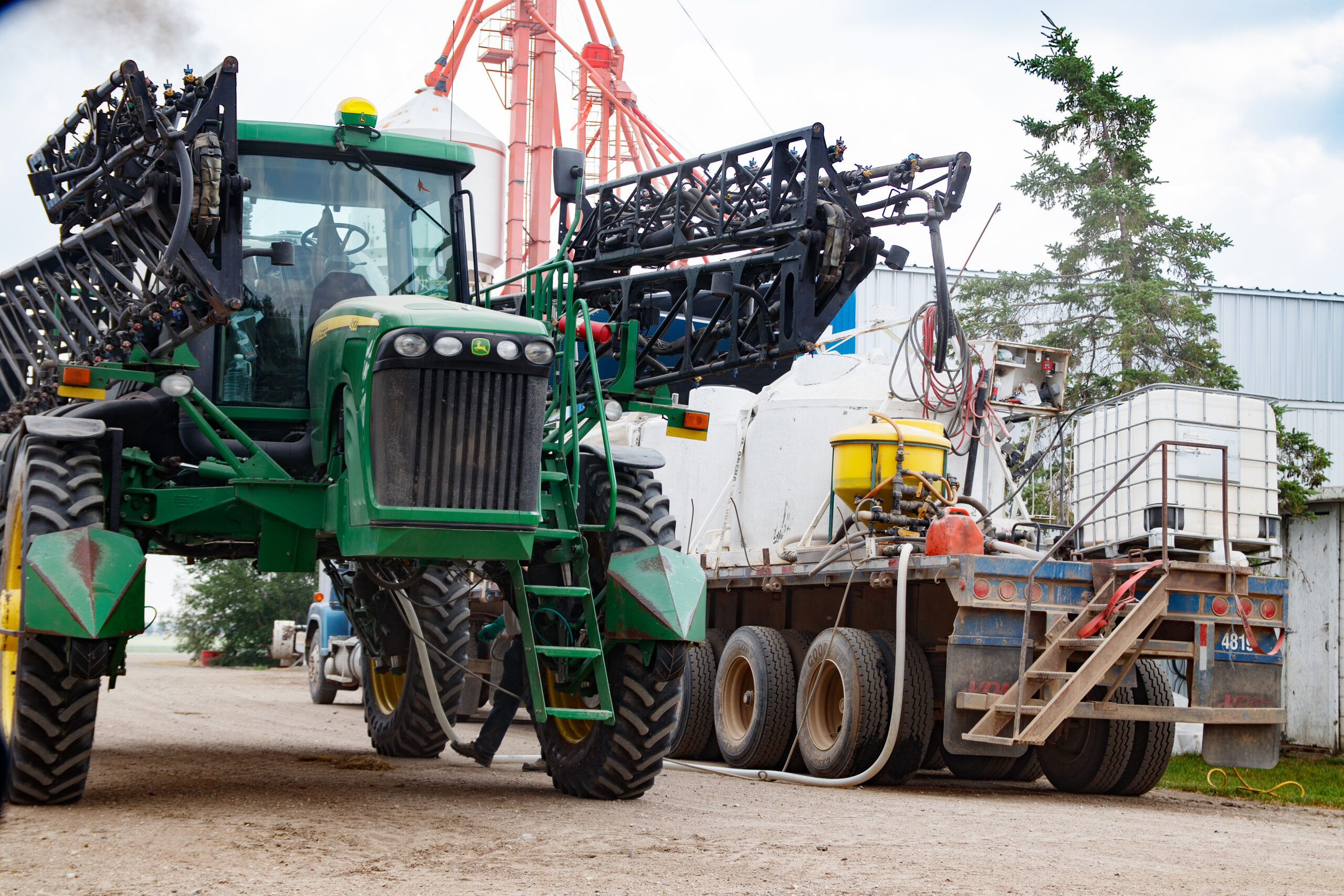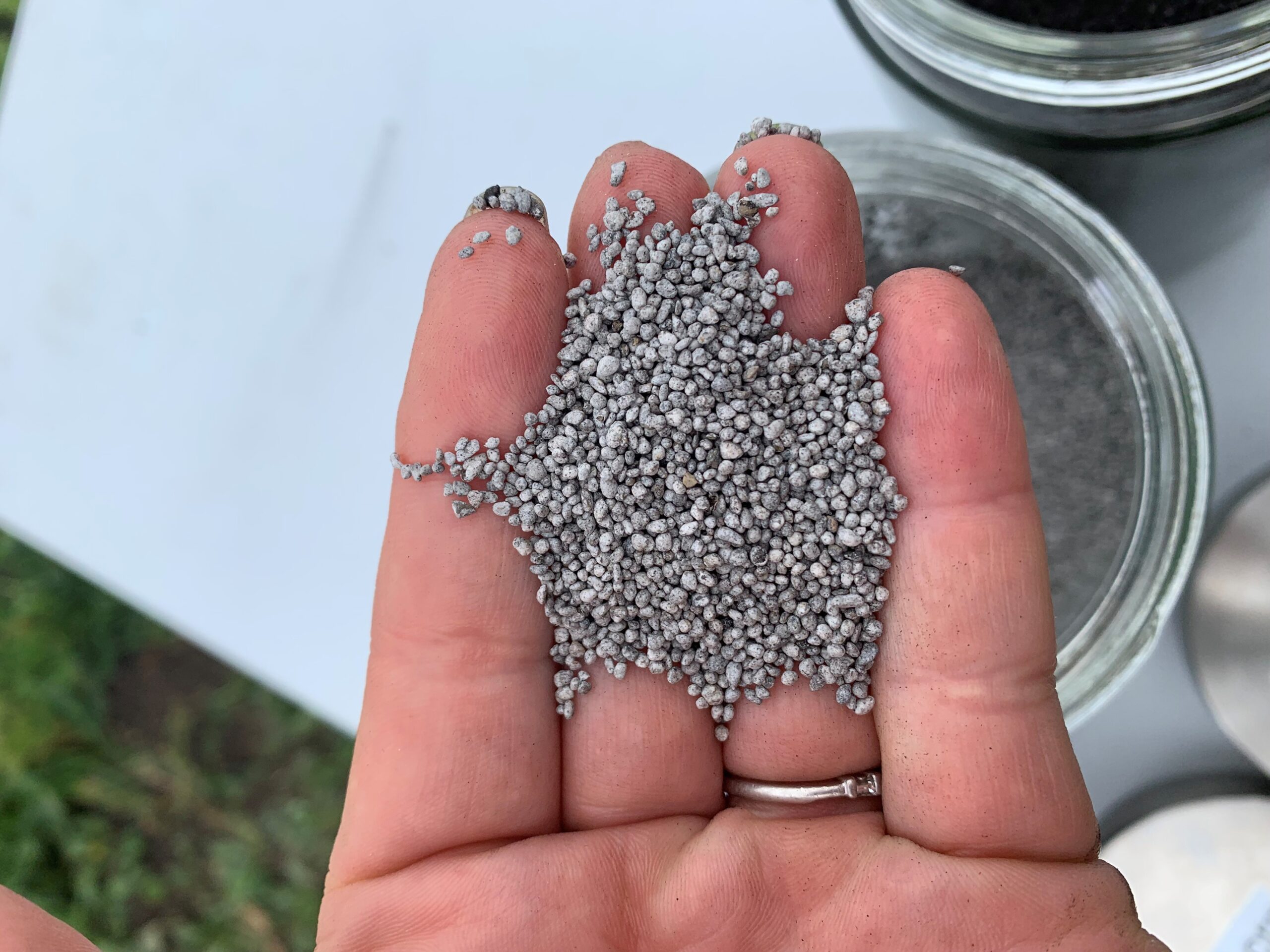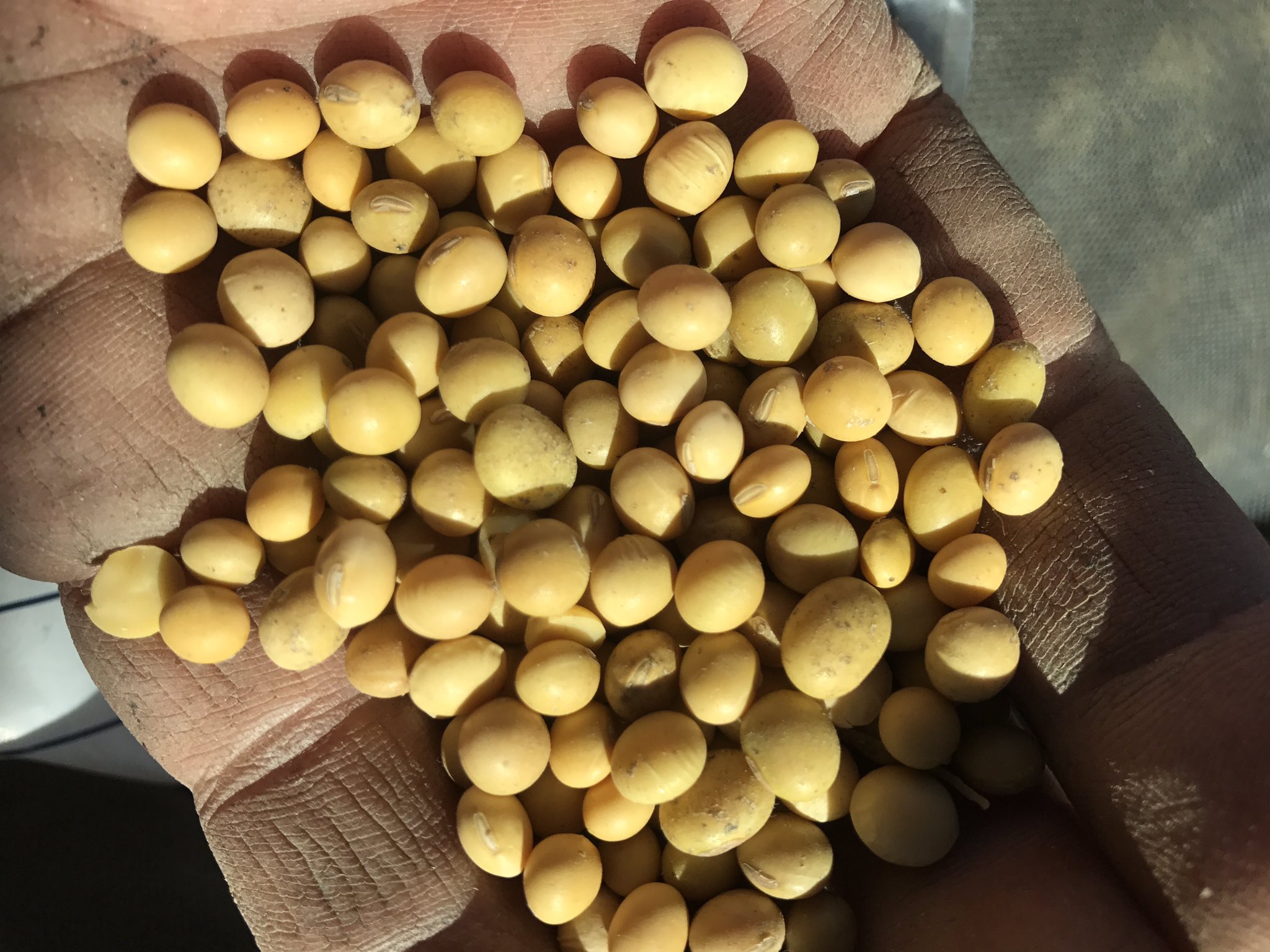By Bruce Barker, PAg
Weed control under stressful conditions, such as drought and high temperatures, becomes even more critical than under good growing conditions. Weed competition for moisture can mean increased crop stress. When weeds and crops are under stress, herbicide activity can affect both crop injury and weed control.
Pause Pre-Burn After a Frost
Regardless of severity of frost, plants need to be actively growing or they won’t translocate. The target plants must have >60% green tissue for applications to be effective. A frost that occurs soon or after application (within 24 hours on annuals, 3 days on perennials) can impact control. If temps reach above 8°C the next day translocation will resume. If there is a hard frost predicted for the future, then don’t spray.
-4°C or warmer: A frost of 0°C to -3°C will not usually harm the target weeds and you can resume spraying later in the day if temperatures are forecast to reach 8°C or more for at least 2 hours after application.
-5°C or colder: Heavier frost (<-5°C) can cause more severe damage to target weeds, so avoid spraying for 1-2 days to assess any injury.If at least 60% of the plant is still green and actively growing, and daytime temperatures are forecast to reach 8°C or more for atleast 2 hours after application, you can resume spraying.
Cautious In-Crop When Cold
Weeds need to be actively growing so that they are susceptible to the herbicide and the crop needs to be actively growing so that it can metabolize the herbicide to prevent injury.
“The 5-10 Rule”
Spraying when there is a minimum overnight temperature of 5°C or greater and 10°C or greater during application. This range represents the ideal temperatures for best results. One should avoid spraying when overnight temperatures are below +3 °C and application temperatures are below +8 °C.
If a frost event occurs, wait 2-3 days or more of frost-free nights before spraying. The minimum temperature for biological activity to occur (actively growing plant) is 5°C overnight.
Spraying Frost Damaged Peas
If the plants show some frost symptoms only, Eric Johnson, Weed Research Assistant with University of Saskatchewan suggests herbicide application can be made after 24-48 hours. If there is more extensive damage, such as the tops of the plants are completely frozen and the plant is showing regrowth from the axils of lower leaves, or from the scale leaves (lowest nodes), then pesticide application should be delayed until the plant has had time to recover. Allowing the peas to develop one or two nodes of regrowth is a good sign of recovery. Peas produce a node every four to five days on average under good growing conditions. This means waiting up to a week after severe frost for herbicide application may provide the safest application window if crop tolerance is a concern.
Imidazolinone herbicides products will often cause the yellow flash on plants when applied under cool, overcast conditions, independent of crop stage according to Johnson. However, the risk of injury may be further exacerbated if the imi herbicideis applied on frost-stressed peas that are past staging.
If the frost damage is extensive, such as the tops of the plants are completely frozen and the plant is showing regrowth from the axils of lower leaves, or from the scale leaves (lowest nodes), then pesticide application should be delayed until the plant has had time to recover. Allowing the peas to develop one or two nodes of regrowth is a good sign of recovery. Peas produce a node every four to five days on average under good growing conditions. This means waiting up to a week after severe frost for herbicide application may provide the safest application window if crop tolerance is a concern.
Staging a frozen pea plant can be difficult as each plant could look somewhat different, and depends on the extent of damage. Images in Figure 1 demonstrate growth from the two scale leaves (first two nodes) as well as from the axil of the first true leaf (third node). BASF suggests that the safest way of staging peas for imidazolinone herbicide application in these cases is to base it on the leaves and nodes on the frosted stem and the regrowth stem. It is advised to count the two leaves and two nodes on the frosted main stem because the plant does not reset after the frost.

Source: Pioneer Co-op AgTeam, Swift Current
How Plants Adapt When Conditions Are Hot and Dry
Moisture stress promotes the formation of thicker cuticles to prevent moisture losses. Other structures, such as hairs on the leaf surface, will be produced at a higher density than under moist conditions. These hairs create a microclimate at the leaf surface to prevent evaporative moisture losses. The changes to the plant surface impact herbicide uptake and activity.
The defenses to prevent moisture loss are also effective barriers to herbicide uptake across the leaf surface. Thicker cuticle layers or closer spaced hairs make it harder for the herbicide to make it past the leaf surface and to the cells of the leaf where they can either be activated or moved to other parts of the plant.
When the metabolic engine of the plant is shut down under stress (hot, dry, cold, or wet), herbicides that interfere with the functioning of a metabolic target site do not work as well. The weed may recover as the herbicide is either bound up and/or deactivated in the plant. When the weed starts growing again, the herbicide may have less effect resulting in reduced weed control.
Most of the crops grown in Western Canada are cool season C3 plants with a few exceptions like corn and forage millets. C3 plants exhibit slow growth during hot or dry conditions.
Some plants (including some weeds) known as C4 or warm season plants, have a more complex metabolic process that allows them to continue to grow after the C3 plants have already slowed down. As a result C4 weeds are more competitive under hot or dry conditions. Examples of warm season weeds are green and yellow foxtail (wild millets), barnyard grass, witchgrass, kochia, Russian thistle, lamb’s-quarters, and pigweeds. These weeds can be especially competitive with C3 crops during hot and dry conditions, but their advantage under hot and dry conditions is their disadvantage under cooler conditions, since the more complex C4 metabolic process uses more energy than the C3 metabolic process.
How Hot, Dry Weather Affects Soil-Applied Herbicides
Pre-plant incorporated soil active Group 8 and 3 herbicides are not very water soluble. Because Group 3 and 8 herbicides are typically applied as a granule, moisture is required to break the granule down and allow the active ingredients to disperse evenly over the ground. Dry soil conditions between application and emergence means that the active ingredient may not be dispersed as well and therefore may result in decreased weed control. Injury to lentils may occur with trifluralin if soil and weather conditions (cold or dry soils at the time of seeding and crop emergence) are not conducive to rapid crop emergence. With Eptam®, dry bean injury can occur if stressful environmental conditions occur after seeding.
Pre-emergent surface applied herbicides are applied to the soil surface before or after seeding (prior to crop emergence). They require moisture to move them into the zone where the weed will be emerging so that the active ingredient can either be drawn into the weed by the roots, or by the shoot of the weed passing through the treated layer. Herbicides will break down over time in the soil, but if it was dry at the time of application, these herbicides may become active a short time later, once they receive some moisture.
There are several pre-emergent herbicides that are newer in the Western Canadian market. These products were introduced during the last decade when higher moisture conditions were common and thus weed control was acceptable. These herbicides all have label cautions regarding potential for reduced control and/or crop injury concerns under dry conditions.
How Hot, Dry Weather Affects Systemic Herbicides
Systemic herbicides translocate from the leaf to the growing point or target site to suppress the weed, and require active weed growth for movement of the herbicide within the weed. If that mechanism is shut down by stress, the systemic herbicide may fail to get to the growing point or target site for action. The result can be expected damage to the intercepting leaf but not to the growing point. In the end, weed control may not be obtained at the level expected or that is observed under ideal growing conditions.
Many crops are able to metabolize the herbicide resulting in crop safety and no damage observed to the crop from the herbicide application. If the crop is not actively growing, the active ingredient in the herbicide may not be fully metabolized by the crop which increases the risk of crop injury.
How Hot, Dry Weather Affects Contact Herbicides
Contact herbicides kill leaf tissue upon contact and require good spray coverage of the leaves and growing point for adequate control. Performance of contact herbicides in hot, dry weather can be a double edge sword. They may work faster, but in some cases too quickly. Under very hot conditions, application of a contact herbicide can mean nearly immediate death of every cell under the droplet, but this may also result in only partial kill of the entire target leaf tissue, especially if droplets are very coarse and water volumes are low.
In addition, under very hot conditions (wet or dry), some contact herbicides can cause burning to the edges of the leaves of broadleaf crops and leaf tips of grass crops that would normally tolerate the herbicide. The crop does not have an opportunity to break the herbicide down fast enough to avoid the herbicide concentrating in those areas and becoming toxic to those tissues. Crop injury may present as necrotic (burnt) or chlorotic (yellow or sometimes white) tissues at the points of concentration.
Time of Day for Spraying
Time of day for spraying has shown to be effective for reducing tolerance issues and improving the performance of various herbicides. Group 1 dim products applied at mid-morning to noon are more susceptible to bicarbonate water antagonism than those applied in the evening. This is typically a result of multiple stresses as dims are somewhat susceptible to ultraviolet light degradation after application.
Contact herbicides are typically light activated. Applications in the evening at dusk or in the dark can improve weed control and crop tolerance. The droplets have time to diffuse across the leaf surface, giving better coverage before being activated. It also allows more time for the tolerant crop to break down the herbicide, reducing the risk of crop damage.

Source: Grains Research and Development Corporation, 2013
Making the spray application at times when the evaporation pressure is low is also a useful strategy. A parameter called Delta T can be used to determine the power of the drying force. Delta T, the difference between the wet bulb and dry bulb temperature, is used to indicate evaporation rate and droplet survival. Humidity nor temperature alone is directly related to water evaporation. When the Delta T value is high the spray droplet can dry up before the herbicide gets a chance to move into the plant, resulting in reduced herbicide efficacy or delayed herbicide uptake. If the Delta T value is very low, spray conditions may also not be favourable (Figure 2).
The search for low Delta T values often leads to spraying in the early morning, late evening, or overnight. Caution is advised as these are also the times that temperature inversions are prevalent. A temperature inversion occurs when a warm layer of upper air traps a layer of cooler air near the soil surface. If pesticides are applied during an inversion, fine spray droplets can remain suspended in the cool air and move laterally off target. Inversions are most likely to occur between sunset and two hours after sunrise. Spraying during inversions should be avoided due to the potential for spray drift.
Adjuvants/Surfactants
Most herbicides have the best adjuvant for their performance and tolerance listed on the label, in some cases even supplied with the product. Adding more adjuvant does not improve performance from the rate indicated on the label.
Ensuring the correct concentration of surfactants is also important. For example, increasing the applied water volume will decrease the concentration of the active ingredient and any surfactants in the formulation. It may be necessary to add additional surfactant to maintain the recommended concentration.
Water Quality
Pay attention to potential water antagonism. Dry conditions concentrate ions in water sources (surface and sub-surface). Well water can also have high mineral content and may antagonize herbicides. Key herbicides that experience antagonism are:
- Glyphosate (hard water ions such as calcium, magnesium, iron, as well as manganese and zinc that are found in some micro-nutrient products. Zinc is particularly antagonistic)
- 2,4-D amine (calcium, magnesium, and bicarbonate)
- Group 1 herbicides such as clethodim, tralkoxydim, and sethoxydim that are antagonized by bicarbonate usually found in deep wells along the southern and western borders of Saskatchewan
The addition of ammonium sulphate is a fix for ion antagonism like hard water ions and bicarbonate. In some cases the concentrations of hard water ions is high enough that another water source is the best course of action. This is indicated by a combined hardness of greater than 500 parts per million calcium carbonate equivalent of the hard water ions.
Foliar herbicides such as glyphosate, bromoxynil, and diquat can be bound up strongly by suspended clay and organic matter in spray water. The fix for suspended particulate is the use of a flocculating agent on the water source to pull the particulates back to the bottom.
Water Volume
Maintaining/increasing water volume is critical to the performance of contact herbicides, both for control of weeds, and crop tolerance. If the water contains hard water ions, using lower water volumes is recommended for glyphosate, to minimize the opportunity for interaction of glyphosate with those ions.
In some cases, lower application volumes are recommended to increase cuticle penetration (ex. glyphosate). However, water volumes can increase the concentration of surfactants contained in the product. Unfortunately, because lower water volumes also need to be applied in smaller droplets to maintain coverage, the risk of evaporation and drift may offset those advantages.
Droplet size
Larger droplets, produced by low-drift nozzles or higher water volumes, or both, will delay evaporation and therefore improve penetration.



